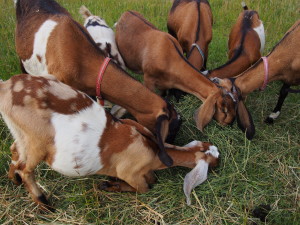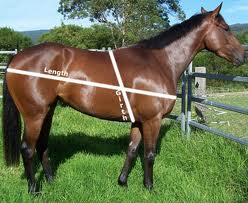Worming / Drenching Recommendations
 Current thinking among leading parasitologists is that the following broad strategies for worm management should be followed:
Current thinking among leading parasitologists is that the following broad strategies for worm management should be followed:
1. Aim to Control Rather than Eliminate Worms
Some degree of parasitism is necessary to stimulate an animal’s immune response to parasites. Animals that lack such exposure tend to have more severe health problems when parasite exposure eventually occurs which is assured in grazing animals.
2. Conduct FEC tests
Conduct FEC tests at appropriate times of the year in order to monitor the level of parasite infection of your animal mobs/herds and consequently their potential to contaminate the pasture with worm eggs. FEC testing is particularly relevant for horses, sheep, goats and alpacas. Keep comprehensive records of your FEC results. In the case of horses, test and keep records for each individual animal.
3. Conduct FECR tests
Know which anthelmintic drugs are still effective in your horses and livestock on your property by conducting FECR tests, preferably annually. This is critical for all species (horses, sheep, cattle, goats and alpacas etc).
4. Target Specific Mobs / Herds for More Frequent Drenching
Certain groups of farm livestock are more susceptible to parasite infection than others. This includes young animals, weaners, animals under stress (including poor nutrition, concurrent disease etc), and lambing and early lactating ewes and alpacas. Note however that in drought conditions, when number of eggs and larvae on pasture are low, drenching is not advised.
Animals develop immunity to parasites as they mature. The level of immunity developed varies with the livestock species. Cattle develop the highest level of immunity, followed by alpacas, sheep and finally goats.
5. Target the Individual High-Shedding Animals for More Frequent Worming/drenching
In herds/mobs that have not been recently wormed/drenched, certain animals will have high egg counts and are called high shedders. Another proportion will have low egg counts and are called low shedders. The remainder cluster around the average. These differences appear to be due to differences in immunity which is genetically determined (with low shedders having good immunity and vice versa), and there is generally good consistency in broad levels of egg shedding in individual animals over time.
The high shedders harbour a substantial proportion of all worms. These are the animals that contaminate pasture and should be targeted for more frequent worming/drenching, if possible. These high shedders can be identified by FEC tests. Targeting only the high-shedding animals for frequent worming/drenching may be feasible for small herds/mobs, most notably for horses and on some goat and alpaca properties and will help slow the development of anthelmintic resistance by preserving refugia in the low-shedding animals (see Risk Factors for Parasite Resistance).
6. Practice Good Timing of Drenching / Worming
Based on the information provided by your FEC tests on which animals are low and high shedders (if individual FEC testing can be conducted), which mobs / herd have high FEC counts and on the seasonal trends in FEC on your property, you will be able to develop an effective parasite control program. The EggsAct Kit Manual will provide you with further guidance on how to develop your parasite control program.
7. Ensure the Dose of Anthelmintic is Full and Correct
When using anthelmintics ensure your animals receive the full dose and that the dose is correct – base it on a reasonably accurate animal weight (a 15% overestimate is acceptable).
A simple, reasonably accurate formula for estimating body weight for horses is:
Weight (kg) = [girth (cm) x girth (cm) x length (cm)]/11000

8. Quarantine and Worm Newcomers
Newcomers to your property may carry drug-resistant worms. The EggsAct Kit Manual will provide you with further guidance on what approaches to take with newcomers.
9. Use a Variety of Measures for Parasite Management, Including ‘Non-drug’ Measures
Pasture management and other non-drug measures can reduce the number of anthelmintic treatments required, but cannot replace them entirely. The EggsAct Kit Manual will provide you with further guidance on non-drug measures for parasite management.
